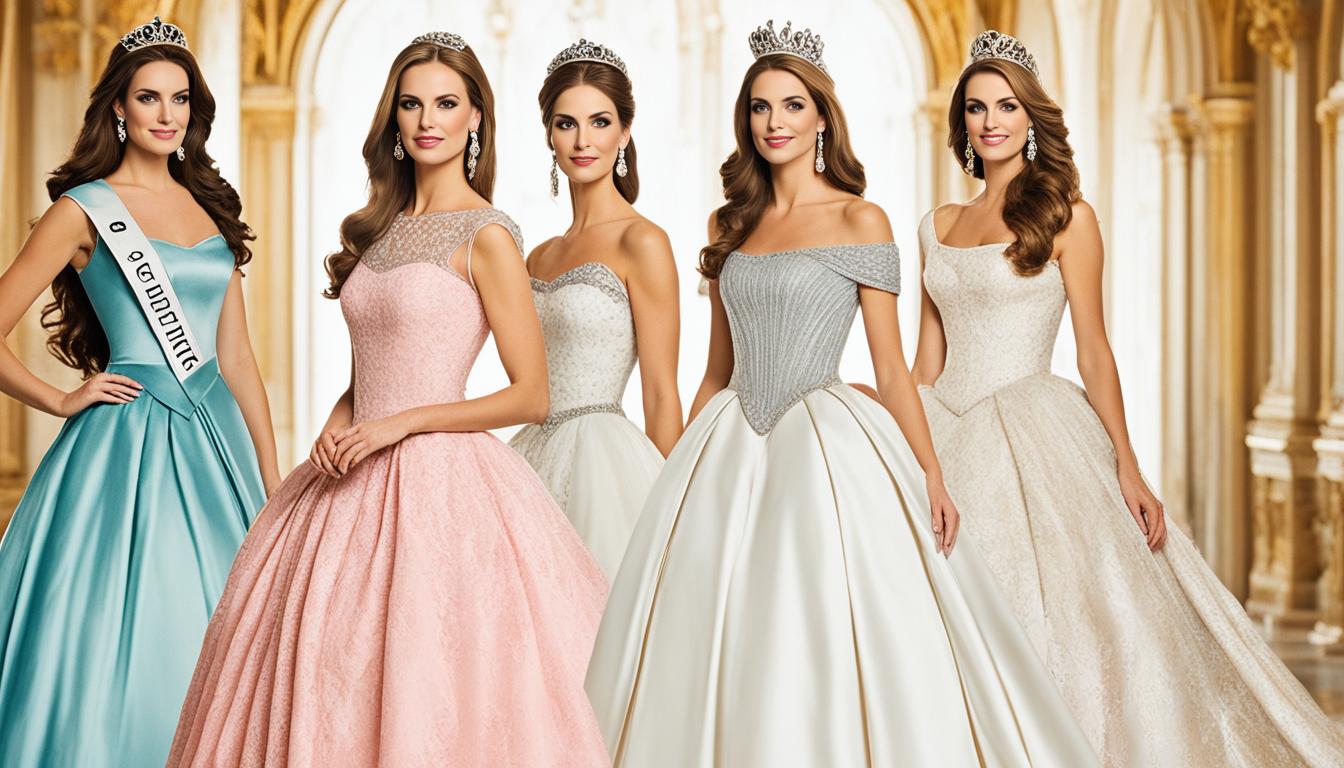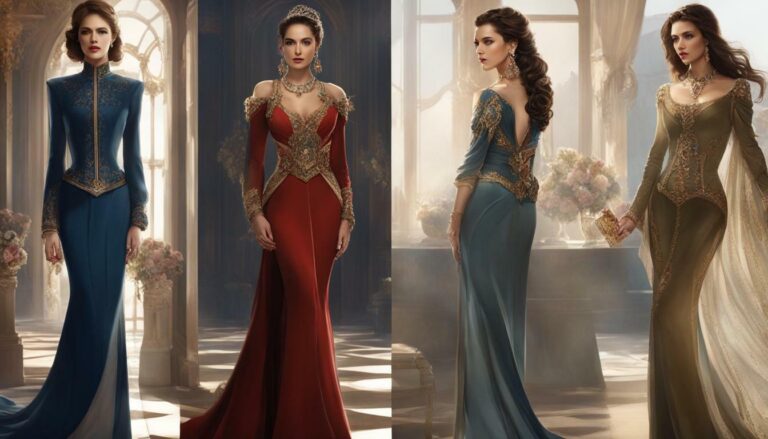Does a Princess Rank Higher Than a Duchess?
In the intricate world of royal titles and hierarchy, the question of whether a princess ranks higher than a duchess has long intrigued royal enthusiasts. Let’s delve into the fascinating realm of the British royal family and explore the distinctions between these two prestigious titles.
Key Takeaways:
- Princesses and duchesses hold distinct positions within the British royal family’s hierarchy.
- The Peerage system assigns higher-ranking titles to dukes and duchesses, but princesses often have a more prominent public role.
- Royal titles can change over time, influenced by significant events and the expectations of the monarch.
- Inheritance of titles within the British royal family is subject to gender bias, with only male royalty passing down princess titles.
- While princesses can also hold the title of duchess and vice versa, the meanings and origins of their titles differ.
Royal Titles and the Peerage System
In the intricate world of royal titles, the British royal family follows a well-defined system known as the Peerage. This system assigns hierarchical positions to individuals based on their titles and ranks within the nobility.
Within the Peerage system, there are various titles for both men and women. For men, titles include duke, marquess, earl, viscount, and baron. Women, in contrast, carry titles such as duchess, marchioness, countess, viscountess, and baroness.
This system of titles is rooted in historical traditions and is typically granted to individuals who have demonstrated loyalty and service to the crown, often in exchange for land or financial support.
At the top of the hierarchy within the Peerage system are the dukes and duchesses. Holding the highest-ranking titles, their status is unrivaled among other members of nobility. Following dukes and duchesses, other titles such as marquesses, earls, viscounts, and barons represent lower levels of nobility.
Let’s take a closer look at the hierarchy of the Peerage system:
| Title | Male Equivalent | Female Equivalent |
|---|---|---|
| Duke | Duchess | |
| Marquess | Marchioness | |
| Earl | Countess | |
| Viscount | Viscountess | |
| Baron | Baroness |
As shown in the table above, the Peerage system assigns specific titles to individuals based on their gender and marital status. While dukes and duchesses hold the highest-ranking titles, other nobles, such as marquesses, earls, viscounts, and barons, also play significant roles within the Peerage system.
Understanding the royal titles and hierarchy is essential in comprehending the differences between princesses and duchesses, which we will explore further in the upcoming sections.
The Evolution of Royal Titles
Royal titles have a fascinating history of change and evolution, particularly during significant events such as the passing of a monarch. In the dynamic world of the British royal family, titles can be adapted, added, or modified, leading to intriguing transformations for individuals like Kate Middleton, previously known as the Duchess of Cambridge.
When Queen Elizabeth II passed away, Kate Middleton was given the title of Catherine, Princess of Wales. This remarkable development showcases the coexistence of the titles of princess and duchess, highlighting the fluidity and complexity of royal hierarchy.
As Catherine, Duchess of Cornwall and Cambridge, she now maintains both her duchess title and the formal recognition as a princess. This underscores the fact that the status of princess and duchess can intertwine based on specific circumstances and the ever-evolving dynamics of the royal family.
The Dual Identity of Kate Middleton
With the bestowed title of Catherine, Princess of Wales, Kate Middleton’s position as a princess became official. However, it is essential to note that her duchess title remains intact, thus highlighting the blend of both roles and the inherently complex nature of royal titles.
“I believe in monarchy. I think it’s something that is part of the culture of this country, has been for centuries, and I’d like to see it continue.” – Kate Middleton
These words reflect Kate Middleton’s understanding and acceptance of the intricate world of royalty, where titles and roles can intertwine, coexist, and evolve over time.
Now that we have explored the intriguing evolution of royal titles and the dynamic nature of princess and duchess roles, let’s delve further into the specific responsibilities and duties that duchesses and princesses undertake within the royal family.
The Role of Duchesses and Princesses
The roles and responsibilities of duchesses and princesses within the royal family can vary. Duchesses primarily fulfill the role of supporting their husbands, who hold higher-ranking titles such as duke or prince. On the other hand, princesses often have a more prominent role in the public eye and may undertake royal duties and engagements on behalf of the royal family.
However, it’s important to note that the specific roles of duchesses and princesses can be influenced by individual circumstances and the expectations set by the monarch.
Public Image and Representing the Royal Family
Princesses, being part of the royal family from birth or marriage, often have a more visible presence in the media and public events. Their actions and demeanor can greatly impact the public perception of the royal family as a whole. Princesses like Princess Diana and Princess Grace of Monaco became influential figures known for their charitable work and sense of style.
Duchesses, on the other hand, tend to take a more behind-the-scenes role, supporting their husbands in their duties and engagements. They often focus on family life and raising their children, while also participating in some official engagements and charity work.
“Being a princess is not just about wearing tiaras and attending glamorous events. It’s about representing the royal family and the country with grace and dignity.” – Queen Elizabeth II
Individual Circumstances and Expectations
It’s important to recognize that the roles of duchesses and princesses can vary based on individual circumstances and the expectations set by the monarch. Some duchesses may take on more public-facing roles due to personal interests and the needs of the royal family, while some princesses may choose to focus on their families and private lives.
For example, Meghan Markle, the Duchess of Sussex, was actively engaged in philanthropy and women’s empowerment initiatives long before joining the royal family. Her role as a duchess allowed her to extend her charitable work on a global scale.
Similarly, Princess Anne, the daughter of Queen Elizabeth II, is known for her extensive charity work and dedication to various causes. She has taken on a prominent role within the royal family, despite not holding the title of princess.
| Duchesses | Princesses |
|---|---|
| Primarily support their husbands | Often have a more prominent public presence |
| May focus on family life and raising children | Represent the royal family in public events |
| Participate in official engagements and charity work | Impact public perception of the royal family |
| Individual circumstances and royal expectations shape their roles | Circumstances and personal interests influence their roles |

Inheritance of Titles and Gender Bias
In the British royal family, there is an interesting gender-based distinction when it comes to the inheritance of titles. Only male members of the royal family have the power to pass down the title of princess to their daughters, while female members cannot pass down their titles to their own children. This means that if Prince George or Prince Louis were to have daughters, those daughters would automatically become princesses. However, if Princess Charlotte were to have a daughter, she would not receive a royal title.
This gender bias within the royal hierarchy can be seen as a limitation for female members of the royal family when it comes to passing down their prestigious titles. It raises questions about the fairness and equality within the royal lineage. It’s important to highlight that this rule applies specifically to the British royal family and may not be applicable to other royal families worldwide, as each monarchy may have its own set of rules and traditions.
It’s fascinating to observe how the inheritance of titles can intersect with gender dynamics within the context of royalty. This distinction shines a light on the complexities of monarchies and the traditions that surround them. Let’s further explore this topic in the table below, which compares the inheritance patterns of princesses and duchesses within the British royal family:
| Princess | Duchess |
|---|---|
| The title of princess can be passed down from a male royal to their daughters. | The title of duchess is received through marriage to a duke or through holding the title of duke in her own right. |
| Male royals can pass down the title of princess to their daughters, ensuring a continuous lineage of princesses. | The title of duchess is not inheritable; it is acquired through marriage or personal merit. |
| Examples include Princess Charlotte, daughter of Prince William and Catherine, and Princess Beatrice, daughter of Prince Andrew. | Examples include Camilla, Duchess of Cornwall, who obtained the title through marriage to Prince Charles. |
This table showcases the contrasting inheritance patterns for princesses and duchesses within the British royal family. It further emphasizes the gender bias that exists when it comes to passing down royal titles. Understanding these distinctions brings us closer to comprehending the intricacies of royal lineages and their historical significance.
Next, in the final section, we will conclude our exploration of princesses and duchesses and reflect on the overarching themes and insights gained from this analysis.
The Relationship Between Princesses and Duchesses
While princesses and duchesses are both members of royalty, their titles have distinct meanings and origins. A princess is typically the daughter or granddaughter of a reigning king or queen and can also be acquired through marriage to a prince. On the other hand, a duchess is the wife or widow of a duke or a woman who holds the title of duke in her own right. It’s important to note that a princess can also hold the title of duchess and vice versa, depending on the specific circumstances and titles bestowed upon them.
For a clearer understanding of the differences between princesses and duchesses, let’s take a look at the following table:
| Princess | Duchess |
|---|---|
| Daughter or granddaughter of a reigning king or queen | Wife or widow of a duke or woman who holds the title of duke |
| Can acquire the title through marriage to a prince | Can also hold the title of princess, depending on the circumstances |
| May have a more prominent role in the public eye | Primarily supports their husband, who holds a higher-ranking title |
Conclusion
In conclusion, the ranking between a princess and a duchess within the British royal family’s hierarchy can be complex. While duchesses may hold higher-ranking titles within the Peerage system, princesses often enjoy a higher social status and have a more prominent public role.
The specific roles and rankings of princesses and duchesses can vary depending on individual circumstances, the expectations set by the monarch, and the cultural norms within the royal family. It is important to understand that these titles can coexist and overlap, and a princess can also hold the title of duchess and vice versa.
Thus, it is crucial to consider the nuances and complexities of the princess vs. duchess status when discussing royal family titles. Both titles hold their own significance and are part of a rich and intricate royal heritage that continues to shape the dynamics of the British monarchy.
FAQ
Does a princess rank higher than a duchess?
The ranking between princesses and duchesses can be complex within the British royal family’s hierarchy. While duchesses may hold higher-ranking titles within the Peerage system, princesses often have a more prominent public role and higher social status. The specific roles and rankings of princesses and duchesses can be influenced by individual circumstances, the expectations set by the monarch, and the cultural norms within the royal family.
What is the difference between a princess and a duchess?
A princess is typically the daughter or granddaughter of a reigning king or queen and can also acquire the title through marriage to a prince. On the other hand, a duchess is the wife or widow of a duke or a woman who holds the title of duke in her own right. It’s important to note that a princess can also hold the title of duchess and vice versa, depending on the specific circumstances and titles bestowed upon them.
What is the Peerage system and how does it relate to royal titles?
The Peerage system is a system of titles followed by the British royal family. It includes titles such as duke, marquess, earl, viscount, and baron for men, and duchess, marchioness, countess, viscountess, and baroness for women. Dukes and duchesses hold the highest-ranking titles within the Peerage system, followed by other nobles such as marquesses, earls, viscounts, and barons.
Can a duchess also be a princess, and vice versa?
Yes, a duchess can also hold the title of princess, and vice versa, depending on the specific circumstances and titles bestowed upon them. Royal titles can change and evolve over time, especially with significant events such as the passing of a monarch or marriage to a prince. The titles of princess and duchess can coexist depending on the current royal family dynamics and individual circumstances.
What is the role of duchesses and princesses within the royal family?
The roles and responsibilities of duchesses and princesses can vary. Duchesses primarily fulfill the role of supporting their husbands, who hold higher-ranking titles such as duke or prince. On the other hand, princesses often have a more prominent role in the public eye and may undertake royal duties and engagements on behalf of the royal family. However, it’s important to note that the specific roles of duchesses and princesses can be influenced by individual circumstances and the expectations set by the monarch.
Are there any gender-based distinctions in royal title inheritance?
In the British royal family, only male royalty can pass down the title of princess to their daughters. This means that if Prince George or Prince Louis were to have daughters, they would automatically become princesses. However, if Princess Charlotte were to have a daughter, she would not receive a royal title. It is important to highlight that this rule applies specifically to the British royal family and may not be applicable to other royal families worldwide.
How do royal titles evolve and change over time?
Royal titles can evolve and change over time, especially with significant events such as the passing of a monarch. When a new monarch ascends the throne, they may choose to bestow new titles or modify existing ones. For example, when Queen Elizabeth II died, Kate Middleton, previously the Duchess of Cambridge, was given the title of Catherine, Princess of Wales. This demonstrates that the titles of princess and duchess can coexist depending on the specific circumstances and the current royal family dynamics.






